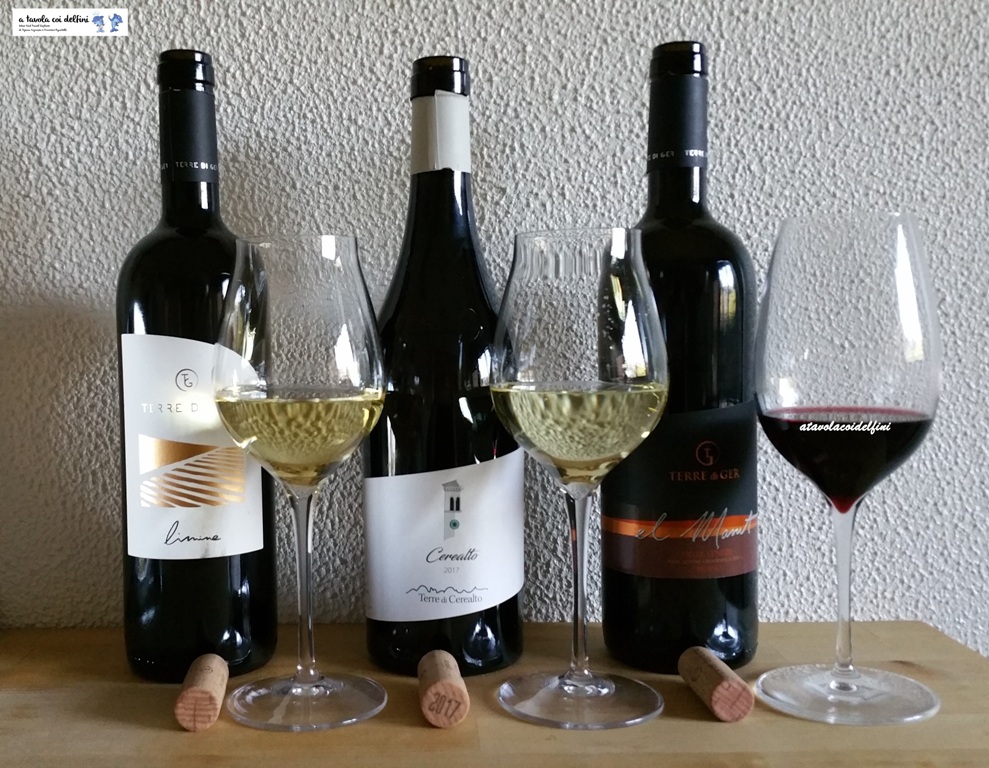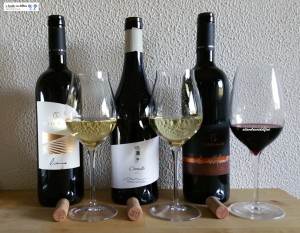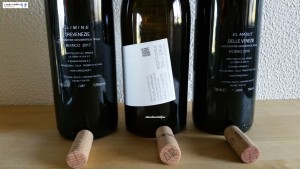Il mondo evolve e il clima cambia, ”i dinosauri si estinguono”, sentenziano i Guru aziendali nelle riunioni di innovation. Tutto ciò è accaduto per varie ragioni alla vitis vinifera, poi reimpiantata con portainnesto, clonata e migliorata in vivaio. Oggi apprezziamo i vini dei vigneti a piede franco, delle vigne più vecchie di 40-50 anni e di quelle indicate come più longeve, dalle produzioni ridottissime. La ricerca ed il miglioramento genetico è una realtà consolidata in agronomia e viticultura, in agricoltura e nelle Università Italiane. Incuriosiscono gli Icewine e gli Orangewine, quanto il vantaggio di vendemmie tardive e la possibilità di anticiparle per avere maggiore acidità, la potatura verde e la elevata densità d’impianto per ottenere uve migliori. In altre situazioni, abbiamo ascoltato produttori anelare l’anticipo di maturazione dei vitigni tardivi, temere le gelate e grandine in danno della produzione.
The world evolves and the climate changes, “the dinosaurs become extinct,” the corporate gurus sentenced in innovation meetings. All this happened for various reasons to vitis vinifera, then replanted with rootstock, cloned and improved in nursery. Today we appreciate the wines of the vineyards with a free foot, of the oldest vines of 40-50 years and of those indicated as more long-lived, with very small productions. Research and genetic improvement is a consolidated reality in agronomy and viticulture, in agriculture and in Italian universities. The Icewine and the Orangewine are intriguing, as is the advantage of late harvests and the possibility of anticipating them for greater acidity, green pruning and high plant density to obtain better grapes. In other situations, we have heard producers yearn for the ripening of late vines, fear the frosts and hail to the detriment of production.
In Franciacorta ci pensano da anni ed hanno già produttivo un vitigno che potrà garantire con le sue caratteristiche l’acidità anche nel futuro con temperature più calde, il metodo classico più rappresentativo d’italia. Quindi si è formato un gruppo di ricerca sostenuto da cantine italiane, dalle Dolomiti al tacco e come si dice isole comprese, per cercare di ottenere dei vitigni resistenti, alle malattie, ai parassiti, che vadano in produzione nella decade mensile sperata. Si chiamano PIWI, nessuna sorpresa fra gli appassionati di vitigni autoctoni, naturali ed ancestrali, biodinamici e quanti altri in differenza, in una Nazione, la nostra, che vede i suoi figli nascere raramente di parto naturale e nella schiacciante prevalenza di parto cesario programmato. Quindi apprezzeremo la coerenza in coda alla valutazione dell’impatto economico che avrà sulle “Imprese Enologiche”, ed il classicismo culturale dei tavoli di degustazione. Vantaggio, sicurezza, tradizione, cultura, chi lo sa? Sacro e profano, nessuna nuova nel terzo millennio.
In Franciacorta they have been thinking about it for years and have already produced a vine that can guarantee its characteristics with acidity also in the future with warmer temperatures, the most representative classic method of Italy. Then a research group was formed supported by Italian wineries, from the Dolomites to the heel and as they say islands included, to try to get resistant vines, diseases, parasites, which go into production in the desired decade. They are called PIWI, no surprise among the fans of native vines, natural and ancestral, biodynamic and how many others in difference, in a Nation, ours, which sees her children rarely born of natural childbirth and in the overwhelming prevalence of programmed cesarean delivery. We will therefore appreciate the consistency of the assessment of the economic impact it will have on the “Oenological companies”, and the cultural classicism of the tasting tables. Advantage, security, tradition, culture, who knows? Sacred and profane, no new in the third millennium.
Di questi nuovi vitigni, di queste neonate etichette, ne avevo avuto notizia a Potenza, Brindisi, Milano e nel Veneto. Conduce l’esplorazione enologica Nicola Biasi, un Gianburrasca dei vigneti. Nicola ha girato per vigneti e cantine in più continenti e preferisce lavorare come consulente. Impianta un ettaro di Johanniter con una densità di 16.600viti/ha e produce in meno di 1000 bt “Vino de la Neu” 2016. Ho avuto l’opportunità di degustarlo in novembre e ricordo un vino cristallino, dai riflessi verdolini, naso agrumato, fiori bianchi, al palato fresco, minerale, sapido. Un’eleganza caratteriale, che segue il progetto di Nicola che ha sostituito il classico impianto di mele, con un vigneto per un vino dai numeri limitati ed il sogno internazionale. Bottiglie vendute tutte e bene, attendiamo il bis.
I had heard about these new vines, of these new labels, in Potenza, Brindisi, Milan and Veneto. Nicola Biasi, a Gianburrasca of the vineyards, conducts the enological exploration. Nicola has toured vineyards and cellars on more continents and prefers to work as a consultant. Plant one hectare of Johanniter with a density of 16,600 vites / ha and produces in less than 1000 bt “Vin de la Neu” 2016. I had the opportunity to taste it in November and I remember a crystalline wine, with greenish reflections, citrus nose, white flowers, on the palate fresh, mineral, savory. A characterful elegance, which follows the project of Nicola who has replaced the classic apple plant, with a vineyard for a wine with limited numbers and the international dream. Bottles sold all and well, we wait for an encore
Terre di Cerealto, prima cantina Veneta a piantare vitigni resistenti Johanniter e Bronner, carattere e finezza dicono i testi, 5000 ceppi/ha. Blend 60 – 40. 12,5% di alcol , cristallino, giallo verdolino, fresco e acido al palato, molto sapido, persistente. Al naso appena accennato erba e pepe verde. Un bianco differente fra i bianchi aromatici del nord-est, una sapidità che alla degustazione a 48ore insiste come da attese. Un abbinamento audace con il panzerotto fritto, mozzarella e mortadella.
Terre di Cerealto, the first Veneta winery to plant resistant vines Johanniter and Bronner, character and finesse say the texts, 5000 vines / ha. Blend 60 – 40. 12.5% alcohol, crystalline, greenish yellow, fresh and sour on the palate, very savory, persistent. On the nose just mentioned grass and green pepper. A different white from the aromatic whites of the north-east, a savouriness that, at the 48th tasting, insists as expected. A daring pairing with fried panzerotto, mozzarella and mortadella.
Terra di Ger, Limine 2017 13,5% di alcol. Fleurtai 90%, Sauvignon Kretos 10%, cristallino, colore verdolino, naso semplice, floreale, gramigna, al palato di maggiore complessità di buona persistenza, salvia, erba falciata susine gialle, fresco, sapido, minerale, morbido, esplode in bocca, forse non equilibrato, ma piacevole. Alla degustazione a 48ore ancora più piacevole.
Land of Ger, Limine 2017 13.5% alcohol. Fleurtai 90%, Sauvignon Kretos 10%, crystalline, greenish color, simple floral nose, gramigna, to the palate of greater complexity of good persistence, sage, mown yellow plums, fresh, sapid, mineral, soft, explodes in the mouth, maybe not balanced, but pleasant. The tasting at 48 hours is even more enjoyable.
Terra di Ger “El Masut” 2016, 15% alcol. 50% Merlot Khantus e 50% Cabernet Cortis, colore rosso cupo, naso speziato, morbido caldo, appena balsamico, evoluto, prugne mature, tabacco, finale a tendenza amaro. Alla degustazione a 48ore si ripete.
Land of Ger “El Masut” 2016, 15% alcohol. 50% Merlot Khantus and 50% Cabernet Cortis, dark red color, spicy nose, soft warm, freshly balsamic, evolved, ripe plums, tobacco, bitter-end finish. At the 48-hour tasting, he repeats.
Osservare il mondo che cambia, la gioventù dei vitigni, le novità della ricerca, ma anche la mano esperta dell’Enologo, che mostra risultati già interessanti con Vin de la Neu e Limine, soggettivi in Terre di Cerealto e El Masut. Lo stile di queste etichette è già ben tracciato, maggiore equilibrio, credo sarà cosa possibile a breve, come breve è ancora la loro storia.
Observe the changing world, the youth of the vines, the novelties of the research, but also the expert hand of the Enologist, which shows already interesting results with Vin de la Neu and Limine, subjective in Terre di Cerealto and El Masut. The style of these labels is already well traced, more balance, I think it will be possible soon, as their story is still short.
Delfini resistenti 🙂
Resistant dolphins 🙂




